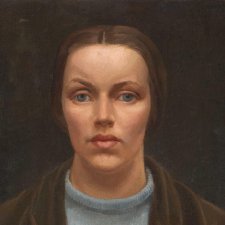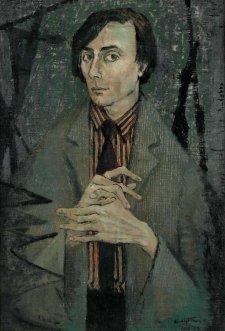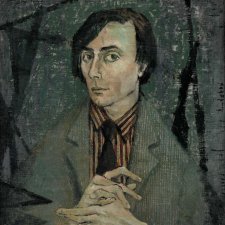- About us
- Support the Gallery
- Venue hire
- Publications
- Research library
- Organisation chart
- Employment
- Contact us
- Make a booking
- Onsite programs
- Online programs
- School visit information
- Learning resources
- Little Darlings
- Professional learning
Thea Proctor (1879-1966), artist and stylesetter, trained at the Julian Ashton School before leaving Australia for London in 1903. She was to remain there, apart from a visit home in 1912–1914, until after World War I. In her early years in London, she was a friend and model for her fellow Ashton School student, George Lambert, and encountered many of the major figures of the Edwardian art world. When she returned permanently to Sydney in 1921, her art and ideas were at the forefront of contemporary art and design in Australia; her authoritative opinions on decoration, colour, interior design, flower arrangement, ballet and fashion were widely published in new journals such as The Home (for which she designed many covers) and Art in Australia. An exhibitor in the watershed Burdekin House exhibition in 1929, she was a mentor and champion for young interior designers including Marion Hall Best. Although she maintained many close friends (and adversaries), she was a lifelong singleton, living very frugally in rented accommodation, making a slender living from drawing classes, periodic exhibitions at the Macquarie Galleries and commissioned drawings of Eastern Suburbs children. The National Portrait Gallery’s 2005 exhibition The World of Thea Proctor was the first large-scale survey of Proctor’s work in all mediums and periods; the publication that accompanied the exhibition comprises the first extended biography of the artist. Building upon her interest in drawing, Proctor made a study of lithography during her second period in London. From this time come the lithographs Mother and son (1915), Before rehearsal (1919) and The balcony (c. 1919), each of which features George Lambert’s sons. When she returned to Australia she briefly championed the art form. She drew this self portrait on a lithographic stone at the Fine Art Society Gallery in Melbourne to demonstrate the technique to observers. Proctor’s lithographs were deprecated by local critics and subsequently – influenced to some degree by Margaret Preston, from whom she became estranged – she turned to making the decorative woodcuts for which she is now best known.
Purchased with funds provided by the Ross family in memory of Noel and Enid Eliot 2013
© Art Gallery of New South Wales
Thea Proctor (age 42 in 1921)



On one level The Companion talks about the most famous and frontline Australians, but on another it tells us about ourselves.



National Portrait Gallery director Karen Quinlan AM nominates her quintet of favourites from the collection, with early twentieth-century ‘selfies’ filling the roster.



21 December 2020
In their own words lead researcher Louise Maher on the novel project that lets the Gallery’s portraits speak for themselves.